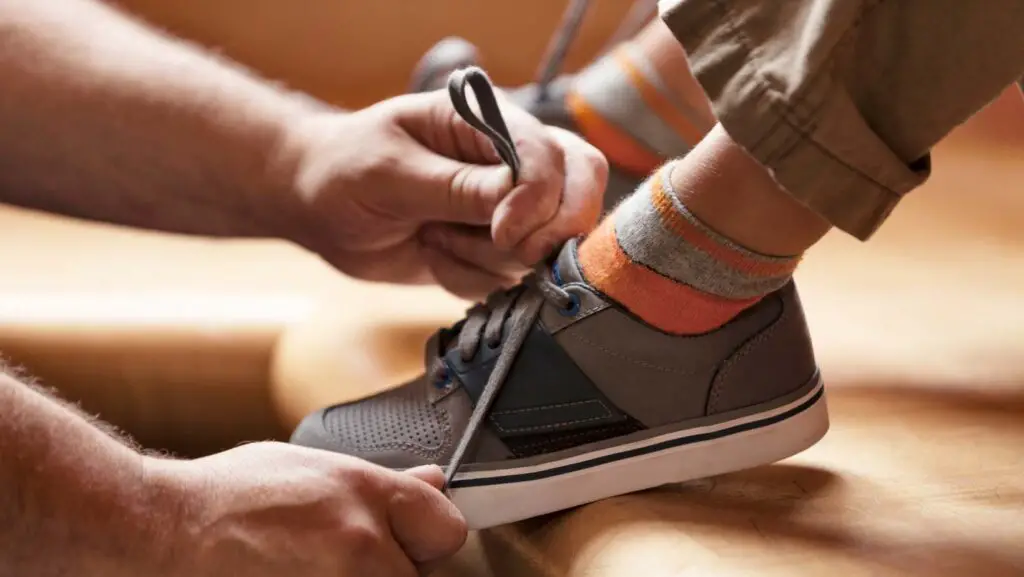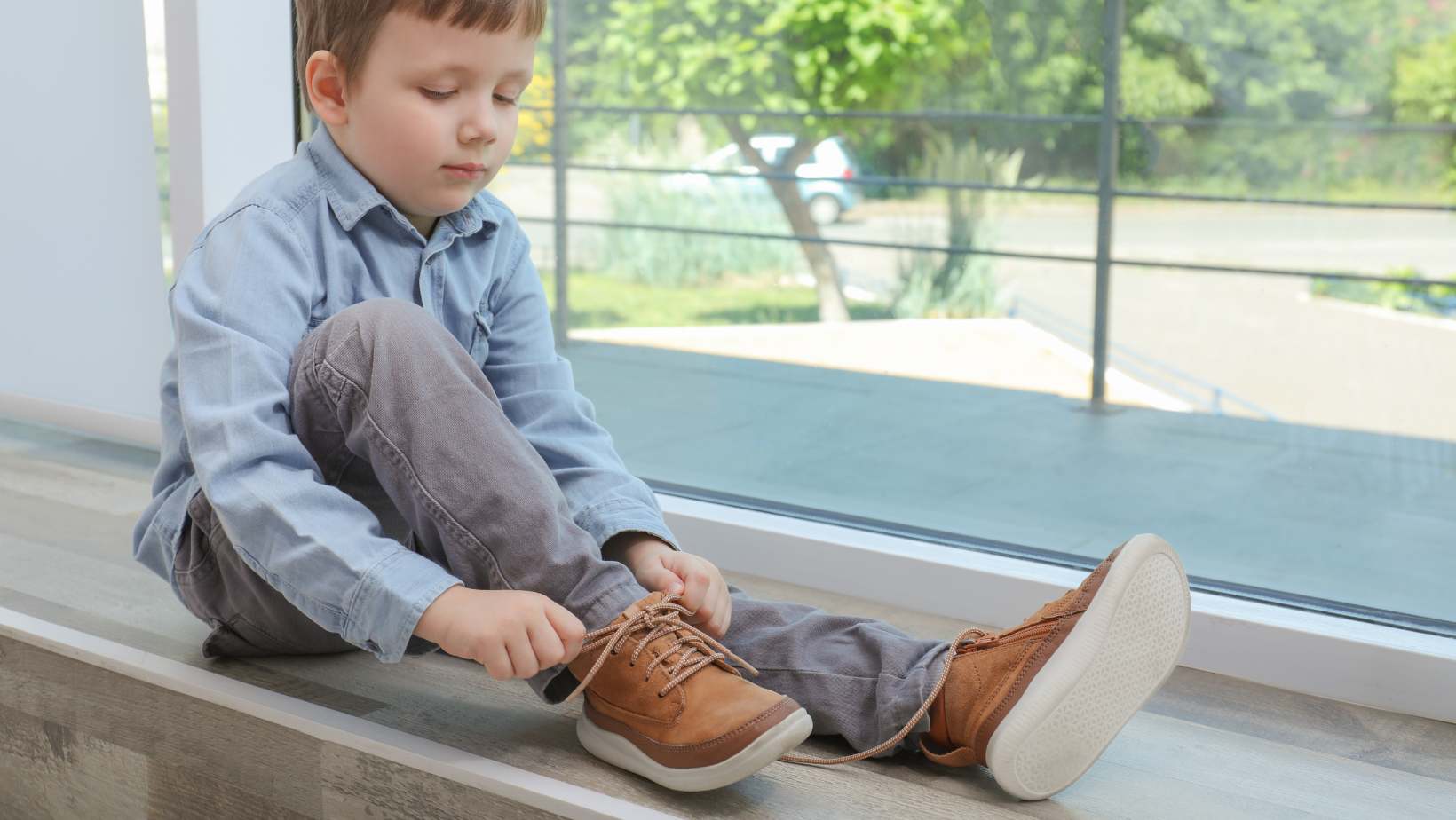Shoe tying is a seemingly simple task that we perform daily. However, have you ever wondered whether you should tie your shoes tight or loose? The answer may not be as straightforward as you think. In this comprehensive guide, we will delve into the art of shoe tying and explore the pros and cons of tying your shoes tightly or loosely. You’ll clearly understand the optimal technique to keep your feet comfortable and secure by the end. So, let’s dive in!
Contents
- 1 Should You Tie Your Shoes Tight or Loose?
- 2 Tips for Tying Your Shoes
- 3 FAQs (Frequently Asked Questions)
- 3.1 Q: Should I tie my shoes tightly or loosely for everyday wear?
- 3.2 Q: What should I do if my shoes feel too tight?
- 3.3 Q: Are there any specific lacing techniques to relieve pressure on the toes?
- 3.4 Q: Can tying shoes too tightly cause foot problems?
- 3.5 Q: Should I tie my shoes tighter for sports activities?
- 3.6 Q: Are there any benefits to tying shoes loosely?
- 4 Conclusion
Should You Tie Your Shoes Tight or Loose?
When it comes to tying your shoes, finding the right balance between tightness and looseness is crucial. Let’s explore the advantages and disadvantages of each approach:
Tying Your Shoes Tight: The Benefits
Tying your shoes tightly offers several advantages. A tight knot ensures that your shoes remain securely fastened throughout the day. This is particularly important during physical activities or when you’re on your feet for extended periods. Tight shoes also support your feet, reducing the risk of sprains or injuries. Furthermore, tightly tied shoes can enhance stability and overall performance, making them an ideal choice for athletes and sports enthusiasts.
Tying Your Shoes Tight: The Drawbacks
While tight shoes offer benefits, they also come with a few drawbacks. Excessive tightness can restrict blood circulation, leading to discomfort and even pain. It may also cause blisters or calluses to develop on your feet, especially if you engage in high-impact activities. Moreover, overly tight shoes can put excessive pressure on your toes, leading to conditions like ingrown toenails or hammertoes. It’s important to balance tightness and comfort to ensure optimal foot health.

Tying Your Shoes Loose: The Benefits
Opting for loose shoelaces has its own set of advantages. Loose shoes allow your feet to breathe and provide freedom of movement, which can be especially beneficial during everyday activities or when your feet need a break from restrictive footwear. Looseness also prevents undue pressure on specific areas of your feet, reducing the likelihood of blisters or discomfort. Additionally, loose shoe laces can accommodate foot swelling that may occur throughout the day, ensuring a comfortable fit.
Tying Your Shoes Loose: The Drawbacks
While loose shoes have benefits, there are a few downsides to consider. Loosely tied shoes may not provide the necessary support, which can be a concern if you engage in activities that require stability and control. Loose laces are more prone to getting tangled or caught on objects, posing a tripping hazard. Moreover, if your shoes are too loose, they may slip off your feet or cause friction, leading to blisters. It’s important to balance looseness and functionality to ensure a comfortable and safe fit.
Tips for Tying Your Shoes
Now that we’ve explored the advantages and disadvantages of both tight and loose shoelaces, let’s delve into some practical tips for tying your shoes effectively:
1. Use a Double Knot for Added Security
To prevent your shoelaces from coming undone, consider using a double knot. Start by tying a regular knot, then make a second knot on top of it. This will provide additional security and minimize the chances of tripping over loose laces.
2. Adjust the Tightness Based on Activity
Consider adjusting the tightness of your shoe laces based on the activity you’re engaging in. Opt for a tighter fit to enhance stability and support for high-impact activities or sports requiring quick movements. On the other hand, for casual activities or when your feet need more breathing space, loosen the laces slightly for added comfort.
3. Experiment with Different Lacing Techniques
There are various lacing techniques available that can alter the fit of your shoes. For example, the “heel lock” technique involves creating an extra loop that helps secure your heel and prevent slipping. Experiment with different techniques to find the one that suits your foot shape and provides the desired level of comfort and support.
4. Consider the Type of Shoes
Different types of shoes may require different lacing techniques. For instance, running shoes may benefit from a snug fit to minimize foot movement, while casual shoes may be more comfortable with a looser lacing style. Consider your shoes’ design and intended use when deciding on optimal tightness.
FAQs (Frequently Asked Questions)
Q: Should I tie my shoes tightly or loosely for everyday wear?
A: For everyday wear, it’s generally recommended to tie your shoes with a snug but not overly tight fit. This balances comfort and support, ensuring your feet are secure without restricting blood circulation.
Q: What should I do if my shoes feel too tight?
A: If your shoes feel too tight, try loosening the laces slightly or using a different lacing technique. You can also consider purchasing shoes with a wider or more accommodating fit.
Q: Are there any specific lacing techniques to relieve pressure on the toes?
A: The “box lacing” technique alleviates pressure on the toes by creating a wider toe box. This technique involves skipping certain eyelets while lacing up your shoes, allowing more room for your toes.
Q: Can tying shoes too tightly cause foot problems?
A: Tying your shoes excessively tight can indeed lead to foot problems. It may restrict blood circulation, cause discomfort, and increase the risk of conditions like blisters, calluses, or ingrown toenails. It’s important to find the right balance between tightness and comfort.
Q: Should I tie my shoes tighter for sports activities?
A: For sports activities, it’s generally advisable to tie your shoes tighter to ensure stability and support and prevent injuries. Tight shoes provide better control and minimize foot movement during high-impact movements.
Q: Are there any benefits to tying shoes loosely?
A: Tying your shoes loosely can provide benefits such as enhanced comfort, breathability, and the ability to accommodate foot swelling throughout the day. Loose shoes can also be suitable for casual activities or when you need a more relaxed fit.
Conclusion
In conclusion, whether you should tie your shoes tight or loose depends on various factors such as the intended activity, foot comfort, and personal preference. Finding the right balance between tightness and looseness is essential to ensure optimal foot health and performance. Experiment with different lacing techniques, adjust the tightness based on the activity and pay attention to the signals from your feet. By doing so, you’ll be able to tie your shoes to keep your feet comfortable, secure, and ready for any adventure.

I am an accomplished footwear blogger with a keen eye for style and a passion for shoes. My deep-rooted love affair with footwear began at a young age when I would spend hours perusing shoe stores, admiring the intricate designs and imagining the stories they could tell.

